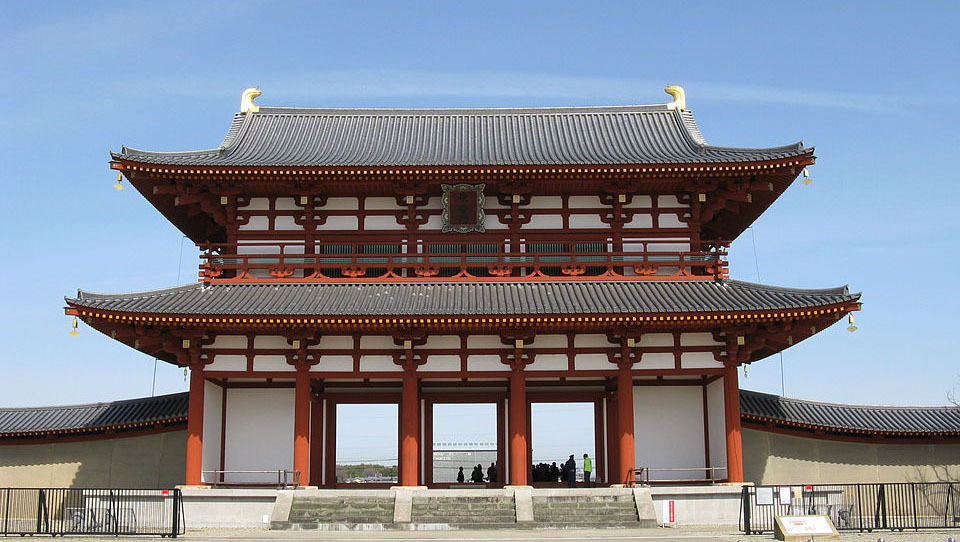Introduction
Heijo Palace, the site of Japan’s imperial palace during the Nara period (710-794 AD), stands as a testament to the grandeur of ancient Japanese civilization. Spanning approximately one square kilometer, this former imperial residence and seat of government is now a UNESCO World Heritage site. While most original structures have been lost to time, archaeological excavations and reconstruction efforts allow visitors to experience the allure of this ancient capital.
Key Information
- Location: Nara City, Japan
- Opening Hours: 9:00-16:30 (last entry 16:00)
- Admission: Free
- Main Attractions: Former Audience Hall, Suzaku Gate, East Palace Garden
- UNESCO World Heritage Site: Listed in 1998
Historical Background
Heijo-kyo (present-day Nara) served as Japan’s capital for over 70 years during the Nara period. Heijo Palace was the political and cultural heart of this ancient city. After the capital moved in 784, the palace was gradually abandoned, but nearby temples retained their importance. Archaeological excavations began in the 1950s, uncovering the palace’s historical significance. In recent years, the government has focused on reconstructions and museum exhibitions to showcase Heijo Palace’s rich history to visitors.
Main Attractions
Former Audience Hall (Daigokuden)
The Former Audience Hall, reconstructed in 2010 to commemorate the 1300th anniversary of Nara’s establishment as the capital, is the largest structure in Heijo Palace. This majestic hall was used for important ceremonies and meetings. Its ceiling is adorned with depictions of the four celestial animals and the twelve animals of the Chinese zodiac. A throne stands at the center. Visitors can explore the reconstructed Former Audience Hall and view the foundations of the Latter Audience Hall nearby.
Suzaku Gate
Suzaku Gate, the main southern entrance to Heijo Palace and the formal entrance to the entire Heijo-kyo, has been magnificently reconstructed. Standing about 25 meters tall, this imposing vermilion gate symbolizes the authority of the ancient imperial court. Visitors can closely examine the intricate wooden structure and ancient architectural techniques.
East Palace Garden (Toin Teien)
The East Palace Garden, a meticulously reconstructed space once used for imperial banquets, features a pond, streams, and bridges. This garden recreates the ambiance of a Nara-period royal garden, allowing visitors to step back in time and imagine life in the imperial court a millennium ago.
Nara Palace Site Museum
Located at the western end of the site, this informative museum displays a wealth of excavated artifacts, models, and visual materials. Of particular interest are the wooden tablets widely used as writing materials during the Nara period.
Excavation Site Exhibition Hall
Situated at the northeast corner of the palace grounds, this facility offers visitors a close-up view of ongoing archaeological excavations, providing insight into the process of uncovering history.
Best Time to Visit
Spring (March-May) and autumn (September-November) are ideal seasons to visit Heijo Palace. Spring offers cherry blossoms, while autumn boasts colorful foliage. These seasons also provide comfortable temperatures for exploring, avoiding the summer heat and winter cold.
Transportation Guide
- From JR Nara Station: Take bus #14 for about 25 minutes
- From Kintetsu Nara Station: Take the Kintetsu train to Yamato-Saidaiji Station (5 minutes), then walk 15 minutes; or take bus #14 for about 15 minutes
- Key bus stops:
- Excavation Site Exhibition Hall: Get off at Heijokyuseki stop
- Former Audience Hall: Get off at Sakicho stop
- Nara Palace Site Museum: Get off at Nijocho stop
Hours and Admission
- Opening Hours: 9:00-16:30 (last entry 16:00)
- Closed: Mondays (or the following day if Monday is a holiday), December 29 to January 3
- Admission: Free
- Heijokyu Izanai-kan (Guidance Facility):
- Hours: 10:00-18:00 (until 18:30 from June to September)
- Closed: Second Monday of February, April, July, and November (or following day if that Monday is a holiday), December 29 to January 1
- Admission: Free
Visitor Tips
- Wear comfortable walking shoes as the site covers a large area.
- Bring sufficient water, especially during summer.
- Check the official website for special events before your visit.
- Consider renting an audio guide for in-depth information about each attraction.
- Visit the tourist information center at Suzaku Hiroba for maps and additional information.
Official Website
Nara Palace Site Historical Park
Nara National Research Institute for Cultural Properties
Conclusion
Heijo Palace offers an unparalleled opportunity to delve into the history and culture of Japan’s Nara period. Through carefully reconstructed buildings and rich museum exhibits, visitors can travel back in time to experience the splendor of Japan’s ancient capital 1,300 years ago. Whether you’re a history enthusiast or a traveler seeking to experience traditional Japanese culture, Heijo Palace is well worth exploring in depth. A visit here will undoubtedly deepen your appreciation and understanding of Japan’s ancient civilization.
